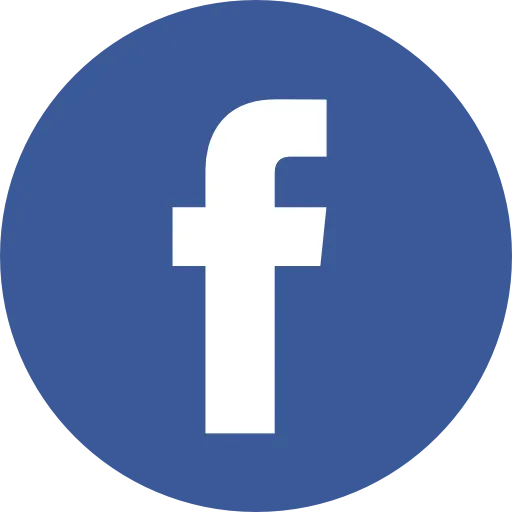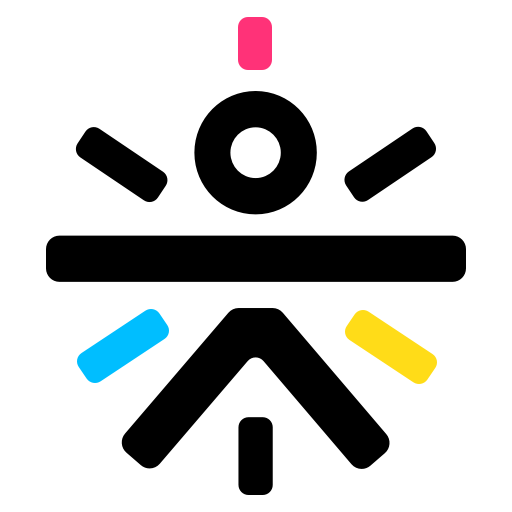OKR — a process, a platform, a culture!
Since the early days of cure.fit, we’ve been focused on only one goal — Making health easy — for millions of users from across the world. It has challenged us to explore the length & breadth of health & fitness as a domain. The sheer vastness of this domain has shown us innumerable opportunities where we can build superior product & services to help create healthier habits for our users.
From healthy food to fun workouts — our journey began on this path. This journey was not simple, and has pushed us all to continuously aim for high performance not just in our thinking but in our execution.
The key here is Planning and Measuring! We knew that we had a mammoth task ahead of us as we needed to: — Plan a diverse set of ambitious goals — Create a well thought through plan of execution — Coordinating various teams for a seamless execution — Measure outcomes, not just the result
Legendary John Doerr, in his famous book “Measure What Matters”, has spoken of well-defined goals as a necessary ingredient for designing for success. “For anyone striving for high performance in the workplace, goals are necessary.” He further elaborated on how to evolve a culture that can encourage disciplined execution on such goals. “Acute focus, open sharing, exacting measurement, a license to shoot for the moon — these are the hallmarks of modern goal science.”
From the early days, we’ve put dedicated efforts in creating a culture that enables our talented & ambitious teams to gear for such audacious goals and used OKRs (short for Objective and Key results) as the instrument to power it all.

For the uninitiated, here is a simple explanation in the words of John Doerr himself:
“An OBJECTIVE, is simply WHAT is to be achieved, no more and no less. By definition, objectives are significant, concrete, action-oriented, and (ideally) inspirational. When properly designed and deployed, they’re a vaccine against fuzzy thinking — and fuzzy execution. KEY RESULTS benchmark and monitor HOW we get to the objective. Effective KRs are specific and time-bound, aggressive yet realistic. Most of all, they are measurable and verifiable.
OKRs enabled us to give due attention to all the above-said ingredients in a simple manner”.
- Acute-focus — Well defined time-bound goals, aligned to the larger annual & long term vision of the organization
- Open sharing — Accessible to everyone, progress tracked & shared across organization for creating transparency and accountability
- Exacting measurement — Focus on measurable deliverables, very objective & self-critical assessment
- A license to shoot — Encouraging risk-taking, ownership ideas & results & high bias for learning by failing fast
OKR WITH MORPHEUS 1.0 — GETTING TECH TO HELP BRING THINGS TOGETHER
We used a Google Sheet to track our OKRs for well over a year however, it had some fundamental challenges such as the accidental deletes/updates, inability to sort the sheet given merged columns, lack of format consistency in tracking and impact measurement (TAKE A LOOK AT OUR PRE-MORPHEUS ERA TO KNOW MORE).
Now, as a team, we have always taken technology and deep product thinking as a primary tool for problem-solving for the toughest of health & fitness challenges. So these challenges were seen as a new opportunity by our tech folks, who felt that we needed a tool that showed us the way.
This thought seeded the effort towards the design & development of a platform that we know as Morpheus. The name, as you might know, comes from the movie, Matrix where Morpheus shows Neo the way.

Like many other tech transitions from operational processes, the first version of Morpheus translated the prevalent manual flows in a better tech framework — one that was stable, easy to use and had a promise to scale.
The ability or promise to scale is the most critical aspect of this effort. While the first version was a simple to use tool, it was backed by a fundamental framework that has scalability & flexibility of any enterprise-grade solution. We created it in the same product creation flows that we use for our consumer-facing products:
- In-depth discussions with the employees, as well as with the other involved stakeholders (project managers, program managers) from across the company
- Detailed overview of the ecosystem to understand currently available solutions and learning
- Product working sessions (PWS) with org leaders from different functions on how they see our processes of goal setting & performance tracking can evolve with time.
Insights from these discussions became a valuable input to the PRD that guided the product & tech teams further. This document & associated discussion in writing & keeping it updated has been a real testimony of how a product evolves continuously with user feedback.
The first version of Morpheus (let’s call it Morpheus 1.0) included the ability to create OKRs, assignment & sharing between teams & tracking by user-driven updates. This system solved for challenges like access/edit controls & tracking changes. We were also able to incorporate these OKRs easily in our six-monthly performance review process in this manner.

Along with these operational tools, we got the ability to create a more structured goal management framework. We created three new tenets in our planning framework.
- Strategic objectives (SO) — these are high-level directives that are critical elements of our midterm strategies. They are relevant for 12–18-month timeframe and will have scope & influence across multiple function & strategic choices
- Managed objectives (MO) — these are derived from the SOs and focuses on shorter-term priorities. These are more focused on specific functional areas and KPIs and thus provide a more actionable direction in the short term
- Projects (P) — these are the operational or logical collection of a specific set of OKRs to help achieve a combination of SO & MO, which enables us to design & execute our broader strategic goals clearly

A project has a direct mapping to a combination of SO & MOs and thus has a clear trackability to the end outcome & impact that it creates for the larger goals.
Each OKR is mapped to a project and has a very well defined view on the goals & metrics that is to be improved. For cross-functional projects, this is an enabler (a cross-functional project with tech & ops team can have clear OKRs with a clearly defined contribution and impact metrics for each)
All of the above could not have been possible in a world where information management & retrieval was manual. Morpheus 1.0 enabled this to happen seamlessly and helped us understand more deeply on the challenges that we’ve still overcome to become better at using OKRs to drive our org-wide goals to success.
- Tools like AOP, SO/MO, annual strategic priorities etc. are crucial guiding inputs, traceability of each activity (project, OKR) to them is a very critical piece in ensuring that we’ve a right design and priority of tasks- especially in a highly cross-functional setup
- Each goal requires a comprehensive set of activities across various functional areas to be able to achieve — comprehensive OKRs is critical. To be able to create the right view to monitor this requires a full network view & design with 2-way inputs (Project-to-Individual and Individual-to-Project).
- In case there are other crucial themes within the org, like quality improvement, cost management, retention, it’s imperative to attach OKRs to these priorities in some way to identify at any stage the overall investment & org commitment on these.
These inputs have been a critical set of insights that triggered the further refinement of Morpheus product and associated effort in our annual/quarterly planning process.
MORPHEUS 2.0: NEW AND IMPROVED
In the current form, our OKR process & Morpheus tool solves for most of the issues that we’ve learnt so far. Here’re the key capabilities that are part of the Morpheus 2.0 and powering the fast-moving goals in the current quarter.
- Predefined projects structure — helps create clear visibility on our investment & priorities on all fronts — people, tech & money
- SO & MO — While these stand for a mid-to-long term view, we’ve been able to update these to suit the current reality and new focus that org has built for the coming 12–18 months.
- Project KRs vs Individual KRs — to identify & ensure the critical most KRs are committed & shared by a cross-functional team and are given importance over and above the contributing individual KRs. This system makes sure that project success is owned across the board & not just by a few individuals.
Here’s a quick overview of how the new planning process incorporates these changes and creates a seamless & transparent view of the organizational priorities.
OUR OKR PROCESS
Our OKR process starts by looking at our company’s long term strategy and breaking it down to Objectives (SO & MO) at a quarterly level, which gives clear direction for everyone to understand the long term strategy and how it translates to clear objectives for the given quarter.
Within cure.fit we have many mini-startup teams which comprises people across multiple functions — technology, product, operations, finance, marketing & focused on achieving a specific set of SO & MO for a product/category. These are what we called as a Project in the above discussion. Each project has a dedicated set of owners for ensuring we’ve a clear path & governance on achieving associated OKRs of this project. Project owners work closely with relevant stakeholders across to ensure we’ve identified & prioritized right OKRs to achieve the stated goals in the given timeframe. These are defined at project level KRs.
Individuals can be part of one or many projects and take up individual KRs based on the project KR (directly) and derived (indirect). All of these are recorded & tracked in the Morpheus tool.
To ensure every individual spends a significant amount of time in needle-moving KRs, we encourage every mini-startup group to stack rank their top KRs so that everyone is clear on the must-win KRs. This forces everyone to think deeply and ensure effort is channelized in the direction where maximum attention is required.
As a result, we measure OKRs at company level (Strategic long term objectives), Project level (Short term objectives) and Individual employee level (Key Results).
Pic 1: Long term strategic Objectives


Pic 2: A Mini-Startup project group’s Objectives & Key results
Going by John Doerr in Measure what Matters: “Contributors are most engaged when they can see how their work contributes to the company’s success. Quarter to quarter, day to day, they look for tangible measures of their achievement….. OKRs speak to something more powerful, the intrinsic value of the work itself.”
This OKR platform is built in-line with our culture of being open and transparent. All employees in the org will be able to understand the Objectives & KRs that everyone else is working-on via this platform, which helps our employees to collaborate effectively, share best practices and also contribute to any project should they wish to.
This process is supported by a very active update rhythm that all leaders, project owners & individuals are encouraged to follow. We encourage all to publish their OKRs, mid-quarter progress update as well as end-quarter updates to the larger teams over email & slack (yes, we’ve a dedicated channel for these). These are honest updates listing out success & gaps in our plans vs achievements. More importantly, each of these gaps are backed by learnings that all of us can use for further improvement.
An honest & self-critical review of their achievement and non-fulfilment on these OKRs by the founders, leaders and project owners has inspired us to be objective in our measurement of our success & the real impact that we create for our business.
Over a period, we’ve also defined a quantitative method to rate the KRs performance. This one definition helps keep us consistent & connected to the end outcomes directly.
Pic 3: KR progress status measured against standard definition:

Impact:
The OKR platform has helped everyone in the org to understand where we are heading as an org. Providing complete visibility across the board helps everyone to build trust in the OKR process and also be objective in tracking progress.
PERFORMANCE MANAGEMENT AND OKRs
Morpheus and OKRs are a very critical part of our performance management at cure.fit now and have made our appraisal process objective & decentralized. They have helped us remove many fundamental challenges of typical performance management system today:
- OKRs by nature of being objective & measurable help assess performance & impact of a person’s contribution
- Each individual can highlight the areas that he/she owns and thus has clear accountability for the outcomes as measured in the OKRs.
- No individual (peer, subordinate or project manager) can undue impact on the assessment as their key contribution in the performance management process focuses only on development feedback
- All records & peer feedback are well organized and can be traced over the employee journey for improvements & progression
In 2020, even while the world around us changed, we were able to seamlessly ensure every employee can work on the right priorities that have a direct impact on org level Objectives via our OKR platform.
However, all of us need to know what OKRs are and what they are not alongside the prerequisites that are imperative to make this process work for your organization. We have captured this below:
WHAT DOES NOT QUALIFY AS OKRS
Some learning that we would like to share basis our experiments of using this tool over the period:
- OKRs are not a task tracking mechanism. These are a means to prioritize activities toward a specific goal and measure the real impact of those
- KRs are not all the KPIs you track, they are just the ones that ensure the desired outcome in a significant manner. KR is a list of KPIs applicable to that function/process
- They are not mission/vision statements for the team/company. They are the real, actionable manifestation of how to achieve those mission goals
- They are not targets. Writing good measurable OKRs is not sufficient. They require a disciplined approach in terms of execution, governance and problem-solving
- OKRs are not exclusive- OKRs are meant for every individual who is part of the organization — no matter what role you are in. At the execution level, many individuals will have similar OKRs, but they can be easily made accountable for specific area/product and thus ensuring end-to-end trackability of success of a project
PREREQUISITES FOR MAKING OKR WORK
- A highly visible commitment of the leaders in the org. As Doerr says ‘“An effective goal-setting system starts with disciplined thinking at the top, with leaders who invest the time and energy to choose what counts”. There are just no two ways about it
- A tool can enable the process of creating, capturing and monitoring the progress. But the quality of OKR & their real impact is defined by the time & effort invested in their design
- Measurability & connect to improve — requires a high sense of intellectual honesty and accountability. There are many ways to make a metric green — OKRs should just care about those which create the real impact
In conclusion, we believe that OKR is beyond a process or a platform, it is a part of the organization’s culture. It is therefore important to not treat it as a simple “to-do” list and embrace the philosophy that promotes openness, transparency, structure, focus and even-handedness
-Written by Pritesh Jain, Ankit Gupta & Kannan S













